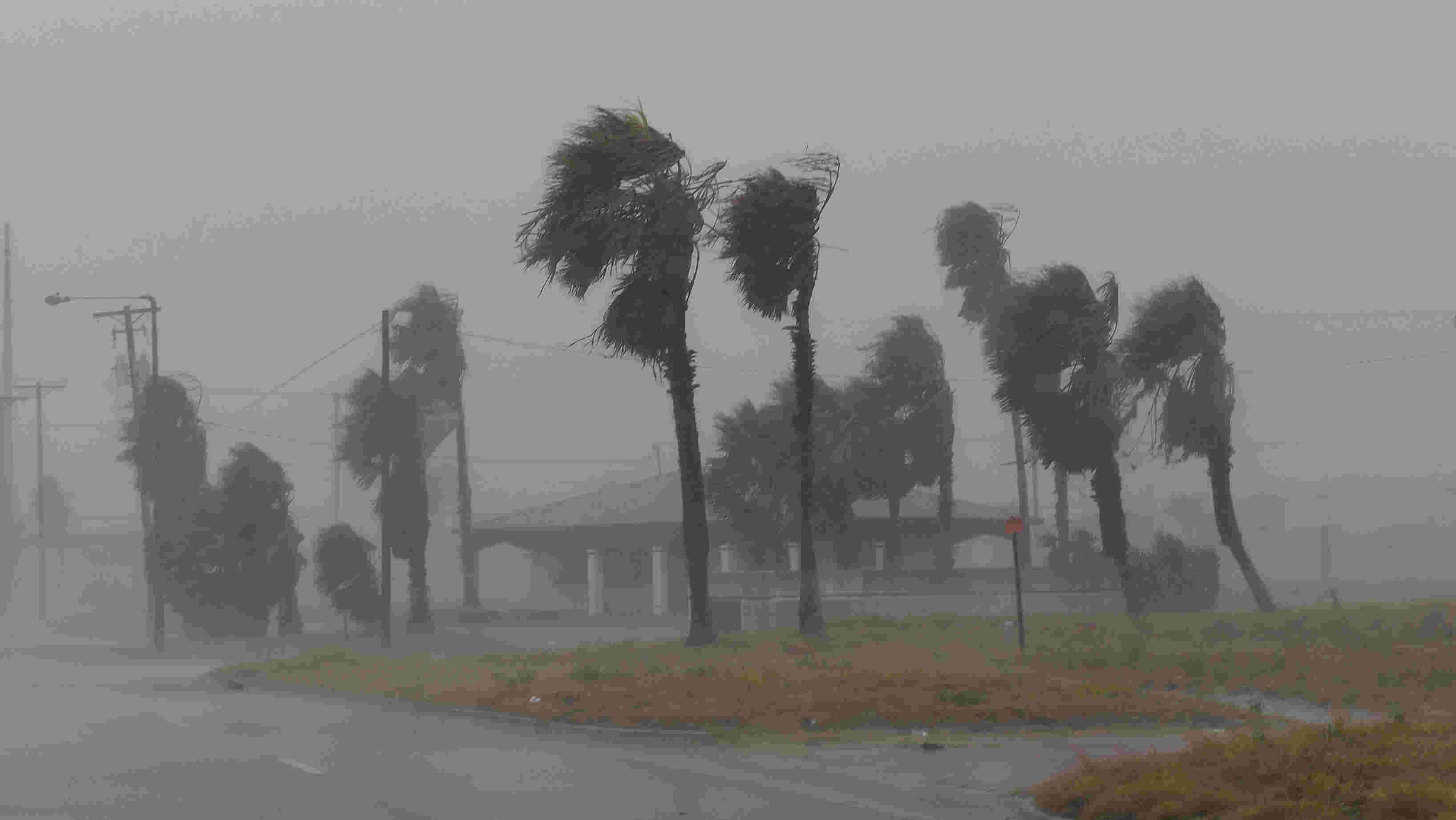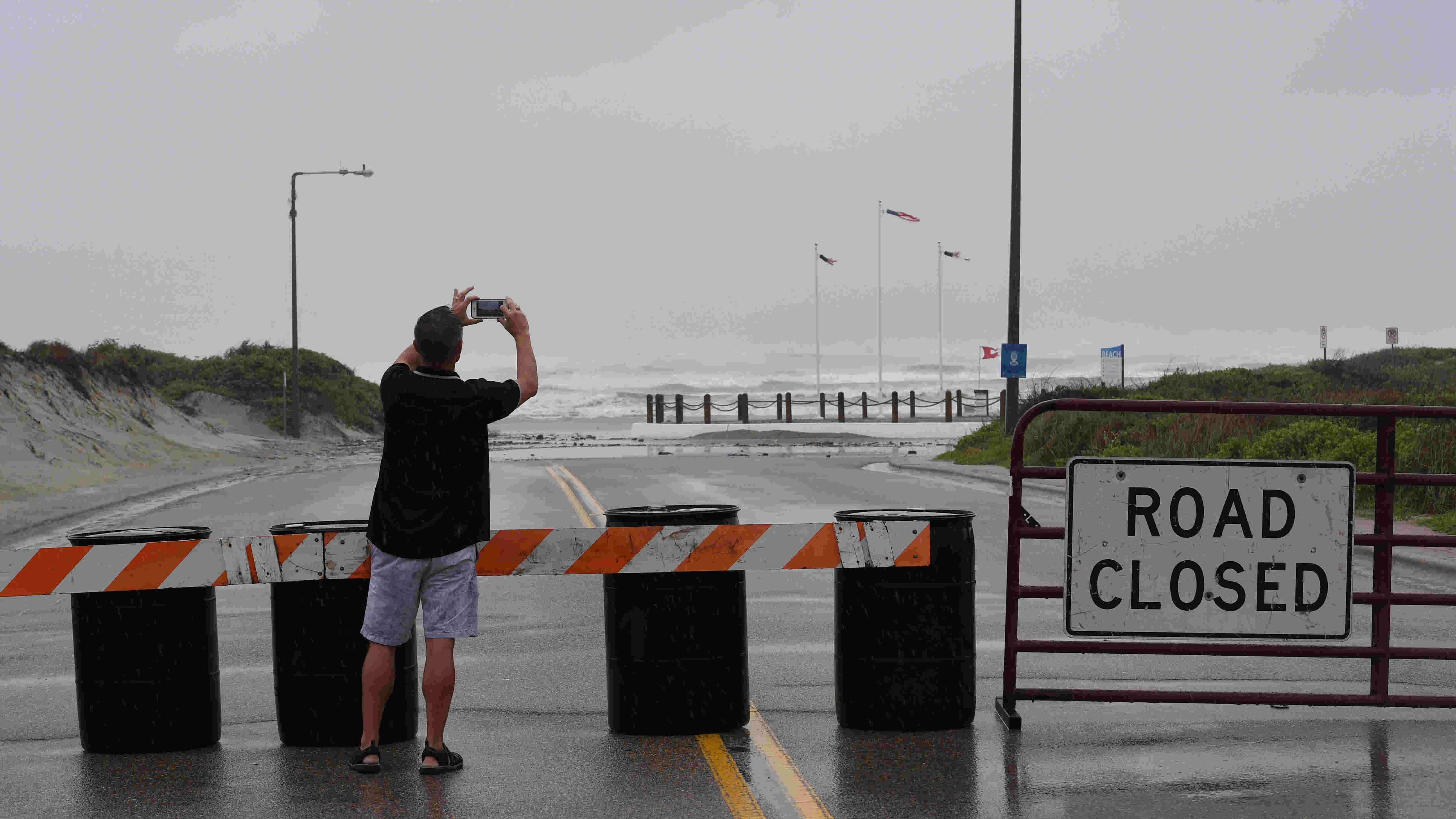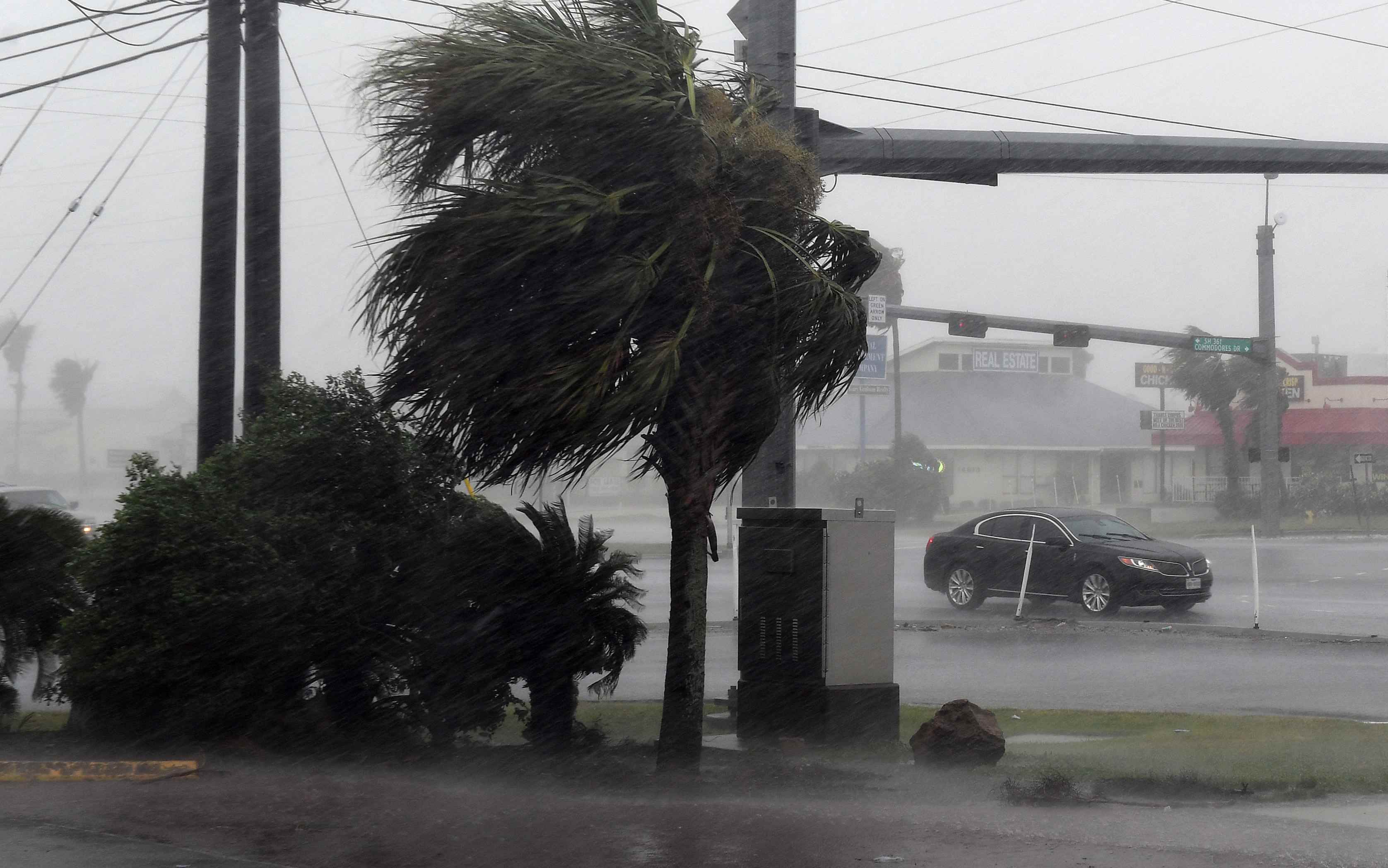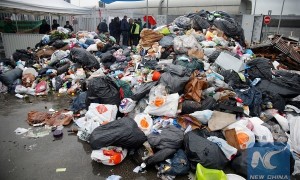Hurricane Harvey with just hours from making its landfall has intensified into a powerful Category 4 storm, the National Hurricane Center said on Friday. As the storm moves closer to the coast of Texas, residents were warned to take shelter from 156 miles per hour (251 kph) and 13-foot (4-meter) ocean surge when the most massive storm in over a decade slams the mainland United States.
The storm was expected to hit land near Corpus Christi, Texas, around 9:00 p.m. (local time) then stall and dump over three feet (90 cm) of rain in areas of the Texas coast and parts of Louisiana as it lingers for days.
While thousands fled the expected devastating flooding and destruction, many residents defied mandatory evacuation orders and stocked up on food, fuel and sandbags.
“We’re suggesting if people are going to stay here, mark their arm with a Sharpie pen with their name and Social Security number,” Rockport Mayor Pro Tem Patrick Rios told reporters on Friday, according to media reports. “We hate to talk about things like that. It’s not something we like to do but it’s the reality. People don’t listen.”

Strong winds batter a house on Padre Island before the approaching Hurricane Harvey in Corpus Christi, Texas, August 25, 2017. / AFP Photo
The storm stranded about 20,000 passengers on three cruise ships in the Gulf of Mexico. Two were rerouted to New Orleans and a third will remain in Cozumel, Mexico, after the Galveston, Texas, port closed on Friday.
Gasoline stations on the south Texas coast were running out of fuel as thousands of residents fled the region. US gasoline prices spiked as the storm shut down 22%, or 377,000 barrels per day (bpd) of Gulf of Mexico oil production and halted 4.4% of US refinery output, according to the US government.
At a Willis, Texas, station, about 50 miles (77 km) north of Houston, Corey Martinez, 40, was heading to Dallas from his Corpus Christi home.
“It has been pretty stressful. We’re just trying to get ahead of the storm,” he said. “We’ve never been through a hurricane before.”

A local resident photographs the beach beside seaside houses before the approaching Hurricane Harvey in Corpus Christi, Texas, August 25, 2017. / AFP Photo
The storm was about 45 miles (70 km) off Corpus Christi and packing winds of 130 mph (215 kph), the NHC said. The NHC’s latest tracking model shows the storm sitting southwest of Houston for more than a day, giving the nation’s fourth most populous city a double dose of rain and wind.
“Life-threatening and devastating flooding expected near the coast due to heavy rainfall and storm surge,” the NHC said.
President Donald Trump on Friday tweeted: “I am closely watching the path and doings of Hurricane Harvey... BE SAFE!” Earlier, a White House official said the president was considering a request to issue an emergency declaration, providing federal disaster relief.
The storm’s approach triggered evacuations in south Texas communities and central coast residents were voluntarily leaving the area. Cities canceled classes on Friday and Monday at dozens of schools along the south Texas coast, home to 5.8 million people from Corpus Christi to Galveston.
David Ramirez left his home in Corpus Christi early on Friday to wait out the storm in San Antonio, Texas.
“With the level of storm surge they’re talking about, there isn’t a lot I could do to protect my house,” he said in an interview while awaiting directions to an emergency shelter.
Louisiana and Texas declared states of disaster, authorizing the use of state resources to prepare. Trump has been briefed and is ready to provide resources if needed, the White House said on Thursday.
The port of Houston, the nation’s busiest petrochemical port, closed its terminals at noon, and earlier halted inbound and outbound ship traffic. The city of Houston warned residents of flooding from close to 20 inches (60 cm) of rain over several days.
Houston Mayor Sylvester Turner advised city residents not to leave en masse, saying “no evacuation orders have been issued for the city.” Chaotic traffic from a rushed evacuation in 2005 with Hurricane Rita proved tragic. “Calm and care!” he said in a tweet.

A motorist drives through heavy rain before the approaching Hurricane Harvey hits Corpus Christi, Texas, August 25, 2017. /AFP Photo
Gasoline prices spike
More than 45% of the country’s refining capacity is along the US Gulf Coast, and nearly a fifth of the nation’s crude oil is produced offshore. Ports from Corpus Christi to Texas City, Texas, were closed to incoming vessels.
The US government said 86 oil and gas production platforms accounting for nearly 22% of Gulf of Mexico crude output and 23% of natural gas production were shut in.
Three refineries in Corpus Christi and one farther inland at Three Rivers were shutting down ahead of the storm. Two others reduced output as ports were closed.
Concern that Harvey could cause shortages in fuel supply drove benchmark gasoline prices to their highest in four months, before profit taking pulled back prices. Meanwhile, US gasoline margins hit their strongest levels in 5 years for this time of year earlier in the day.
The US government said it would make emergency stockpiles of crude available if needed to plug disruptions. It has regularly used them to dampen the impact of previous storms on energy supplies.
Houston-based energy investment bank Tudor Pickering Holt & Co said in a note not to expect significant or lasting production impacts from Harvey. But it said it would affect some production and disrupt refinery runs, imports and exports, "which will show up in the weekly inventory numbers for the next few weeks."
Royal Dutch Shell Plc, Anadarko Petroleum Corp and Exxon Mobil Corp have evacuated staff from offshore oil and gas platforms in the storm's path.
The potential for flooding at shale oil fields in south Texas that produce more than one million barrels of oil a day led several producers to curb operations. EOG Resources Inc said it shut some production in the Eagle Ford shale region. Noble Energy Inc and Statoil ASA also said they were evacuating some staff from production facilities.







